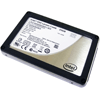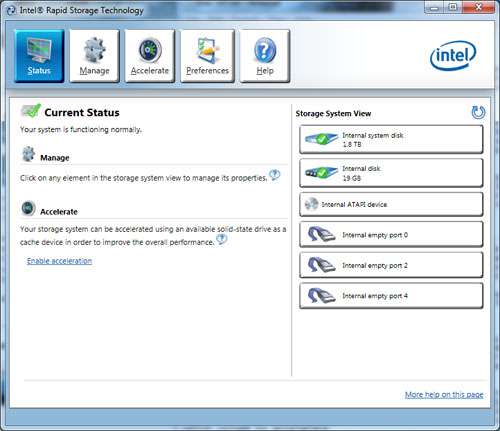- Qualcomm Launches Snapdragon 4 Gen 2 Mobile Platform
- AMD Launches Ryzen PRO 7000 Series Mobile & Desktop Platform
- Intel Launches Sleek Single-Slot Arc Pro A60 Workstation Graphics Card
- NVIDIA Announces Latest Ada Lovelace Additions: GeForce RTX 4060 Ti & RTX 4060
- Maxon Redshift With AMD Radeon GPU Rendering Support Now Available
Intel’s Smart Response; SSD Caching Tested

Interested in faster-than-mechanical performance but don’t want to splurge on a big SSD? Intel has a tech for that, and it meets you half-way by utilizing a modestly sized SSD for caching purposes, used in conjunction with any HDD you want for total storage. Read on as we cover both the setup process and our real-world test results.
Page 5 – Final Thoughts
There’s no denying that Smart Response Technology will benefit the average user who accesses the same applications or files over and over again. I fall into that category myself, and while using our test system found the overall system performance to be far superior with acceleration enabled. Obviously Windows loads faster but our benchmarking applications also opened faster and the system response was generally quicker than normal.
Being a solid-state drive user myself with Windows loaded directly onto one, I’m used to having a quick response. I’m happy to say that in general Windows usage, our test system was right on the money once sufficient data was cached.
Since I don’t do much encoding, if any, I’ll admit that I was hoping to see more from our brief game testing. Level loading is where things should really take off, especially in online game play where the same level may be played over and over again, as is the case in many first-person shooters assuming that network latency is not an issue.
For those who access new data constantly, this may not be much of an option so if extra speed is a requirement I recommend saving some pennies and springing for a dedicated solid-state drive. For the rest, this may just fit the bill.
Smart Response Technology was not developed to replace a solid-state drive and at no time can I see it ever truly matching the performance of one seeing how SATA 6Gbps drives are now on the market. What it is though, is a good alternative to sacrificing storage capacity for speed since not everybody can drop the cost of a few mortgage payments on a 1TB solid-state drive.
What I love is the way that a solid-state drive is added and removed. It is completely seamless, requires no downtime and is finished in a few clicks – kudos to Intel for a very user friendly implementation.If there’s just one limitation we’d rather not see, it’s the lack of AHCI support, because once disabled, it’s disabled for all drives unless your BIOS or EFI allows a deep level of customization.
I’ll admit that $110 is a lot of money for a 20GB drive such as the Intel 311 Larson Creek unit, regardless of the technology. I would likely go for a cheaper alternative if I were in the market for a drive to accelerate a Z68 system.
To see just how this particular drive affects performance on accelerated systems, I’ll be doing further testing with a more run-of-the-mill solid-state drive when I run all of these tests again using a Kingston 64GB SSDnow V+ drive. While the Kingston drive boasts higher read and write speeds, the tests should show whether or not the 311 is money well spent considering sharp consumers can find the Kingston drive on sale for the same expected retail price as the 311. It is important to note that SLC drives will have a longer lifespan, but we don’t see a major importance of having that even in this implementation.
The long and short of it is that it all comes down to what work is being performed, but for now however, based on the results of our testing and the work that I personally do day in and day out, you can color me impressed.

Intel’s Smart Response Technology
Discuss this article in our forums!
Have a comment you wish to make on this article? Recommendations? Criticism? Feel free to head over to our related thread and put your words to our virtual paper! There is no requirement to register in order to respond to these threads, but it sure doesn’t hurt!
Support our efforts! With ad revenue at an all-time low for written websites, we're relying more than ever on reader support to help us continue putting so much effort into this type of content. You can support us by becoming a Patron, or by using our Amazon shopping affiliate links listed through our articles. Thanks for your support!





